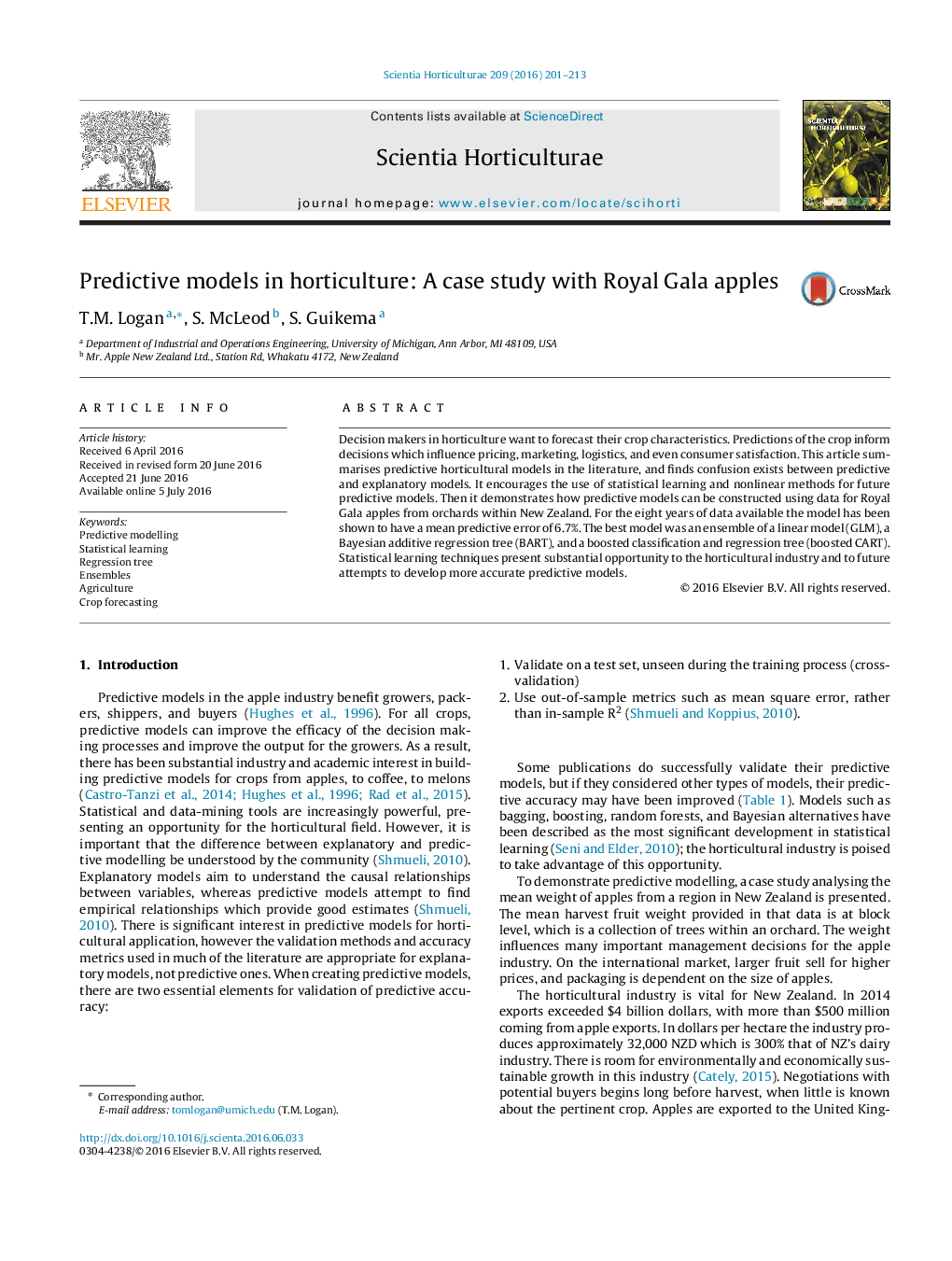| Article ID | Journal | Published Year | Pages | File Type |
|---|---|---|---|---|
| 4565970 | Scientia Horticulturae | 2016 | 13 Pages |
•Summarises predictive models in the horticultural literature and finds confusion between predictive and explanatory models.•Outlines a predictive modelling approach.•Demonstrates how predictive models can be constructed using data for Royal Gala apples from orchards within New Zealand.•Best model is ensemble model including a GLM, BART, and boosted CART.•Cross-validation over eight years of data shows model has a mean predictive error of 6.7%.
Decision makers in horticulture want to forecast their crop characteristics. Predictions of the crop inform decisions which influence pricing, marketing, logistics, and even consumer satisfaction. This article summarises predictive horticultural models in the literature, and finds confusion exists between predictive and explanatory models. It encourages the use of statistical learning and nonlinear methods for future predictive models. Then it demonstrates how predictive models can be constructed using data for Royal Gala apples from orchards within New Zealand. For the eight years of data available the model has been shown to have a mean predictive error of 6.7%. The best model was an ensemble of a linear model (GLM), a Bayesian additive regression tree (BART), and a boosted classification and regression tree (boosted CART). Statistical learning techniques present substantial opportunity to the horticultural industry and to future attempts to develop more accurate predictive models.
Graphical abstractFigure optionsDownload full-size imageDownload as PowerPoint slide
